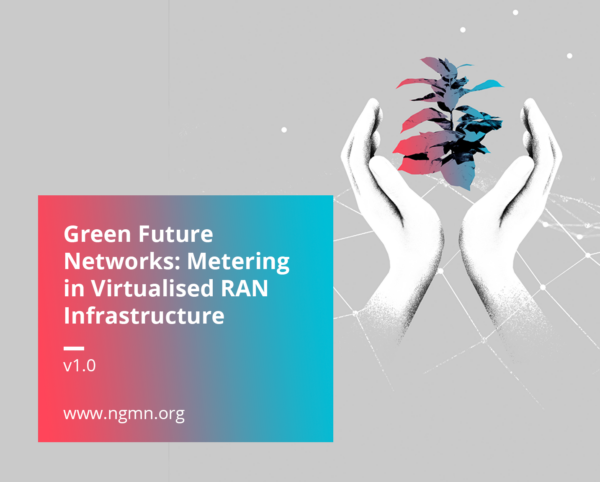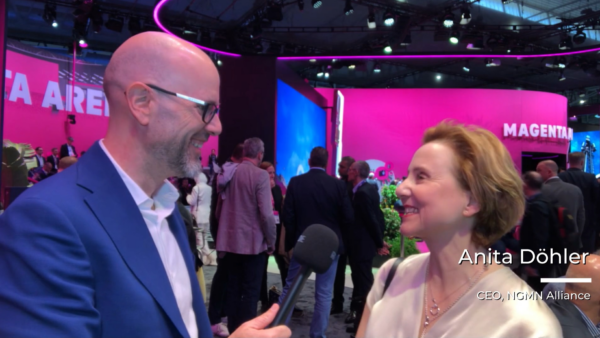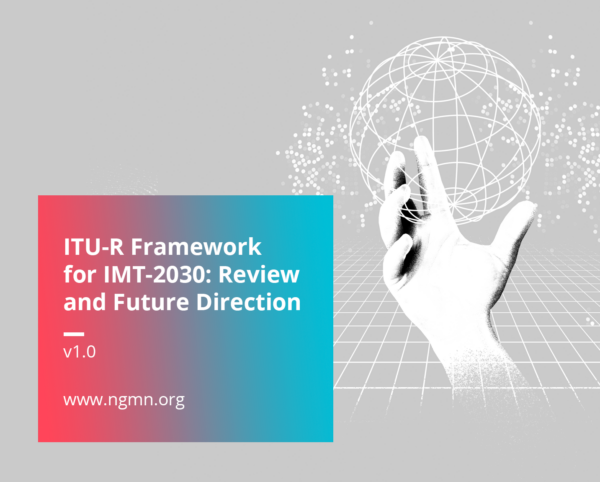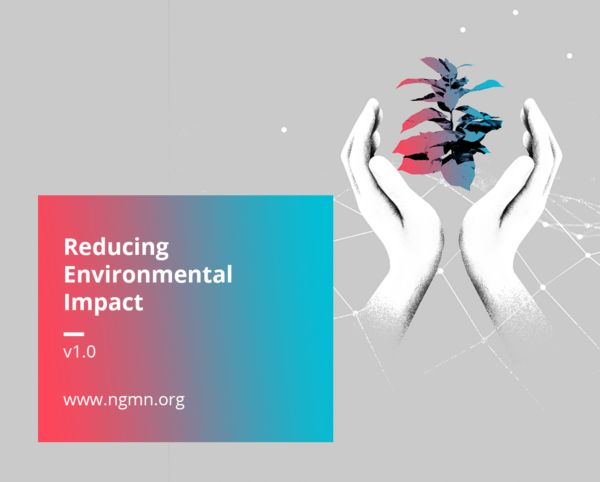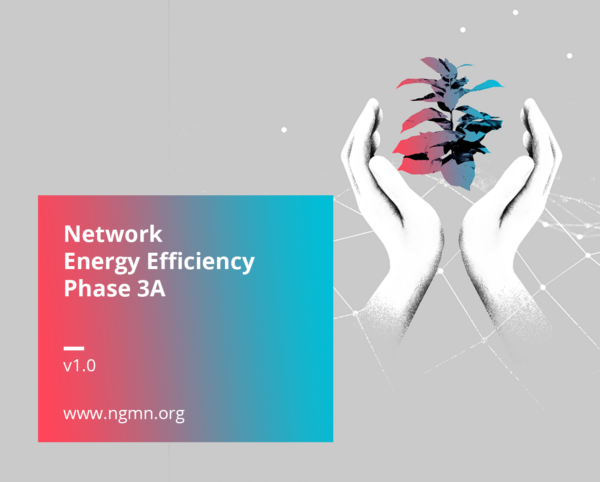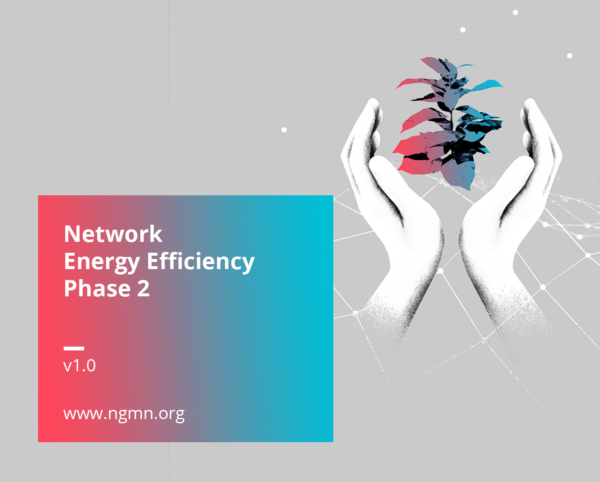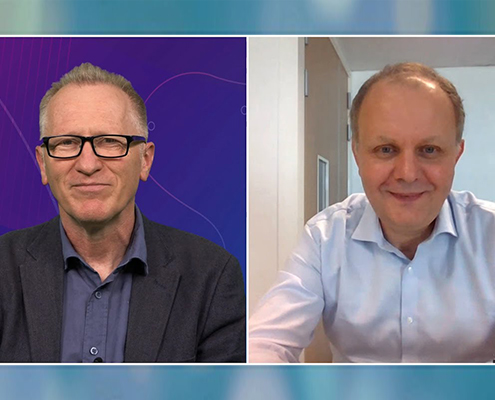Barcelona, Spain, 27 February 2024. The annual NGMN Press & Industry Briefing at Mobile World Congress 2024 took centre stage at the Deutsche Telekom booth showcasing a stellar lineup of senior industry experts representing different geo-regions of the globe. The Alliance underscored the significant advantages derived from its unwavering commitment to provide impactful guidance in the areas Route to Disaggregation/Operating Disaggregated Networks, Green Future Networks, and 6G. By fostering collaboration among Mobile Network Operators, Vendors, System Integrators, Research Institutes, and other players of the value chain, NGMN’s Work Programme is positioned to have a lasting impact on the trajectory of the mobile telecommunication industry, ensuring ongoing innovation and progress with value for end-users and ecosystem players.
The Chairman of the NGMN Alliance Board and SVP Group Technology at Deutsche Telekom, Arash Ashouriha, alongside Anita Döhler, CEO of the NGMN Alliance, conducted a comprehensive review of last year’s accomplishments and provided an overview of the strategy and agenda for 2024, including NGMN’s global biennial Industry Conference & Exhibition which will take place in September 2024 in Munich. Firsthand perspectives and expert insights on the two recent NGMN Publications ‘Cloud Native Manifesto: An Operator View’ and ‘6G Position Statement: An Operator View’ were shared by Board Members of the NGMN Alliance, including Carlos Fernandes (DT), Jerome Birot (TELUS), Laurent Leboucher (Orange), Luke Ibbetson (Vodafone), Narothum Saxena (UScellular), Takki Yu (SK Telecom), and Yuhong Huang (China Mobile). Together, they delved deeper into key trends, innovations, challenges, and guidance, shaping the mobile industry. NGMN Board Members were available for a Q&A session afterward.
Arash Ashouriha, Chairman of the NGMN Alliance Board, underscored the Alliance’s remarkable achievements, noting, “Our Alliance has garnered international recognition for its contributions and the impact to the industry benefiting not only mobile network operators but also the entire ecosystem.” Additionally, he emphasized the significance of a collaborative approach within alliances like NGMN in today’s challenging landscape. Ashouriha highlighted that only by operators confronting industry challenges collectively, can the industry effectively overcome technical, economical and geopolitical obstacles.
Anita Döhler, CEO of the NGMN Alliance added: “We take pride in our diverse team of Board Members representing different geo-regions of the globe, a manifestation of our commitment to tackling the most pressing issues and opportunities and fostering genuine collaboration for the advancement of the global telecommunications industry. We extend an invitation to all stakeholders across the value chain to join our Alliance in our crucial endeavours.”
The briefing underscored the significance of two recent key publications by NGMN that are exerting a considerable influence on the industry landscape. The first, the Cloud Native Manifesto: An Operator View, delineates seven fundamental principles deemed essential for the realisation of open, interoperable, and highly scalable cloud-native networks. This manifesto steers the industry towards the effective adoption of cloud native technologies, emphasizing the transformative potential they hold.
Meanwhile, the 6G Position Statement: An Operator View represents a significant call to action within the mobile industry. It advocates for a paradigm shift in the approach to introducing new technology generations, particularly focusing on the impending transition to 6G. The statement offers comprehensive guidance encompassing various key requirements and principles vital for navigating this evolution. By providing a roadmap for future technological advancements and standards, the 6G Position Statement serves as a cornerstone in shaping the trajectory of the mobile industry’s development.
About NGMN Alliance
The NGMN Alliance (NGMN) is a forum founded by world-leading Mobile Network Operators and open to all Partners in the mobile industry. Its goal is to ensure that next generation network infrastructure, service platforms and devices will meet the requirements of operators and ultimately will satisfy end user demand and expectations. The vision of NGMN is to provide impactful industry guidance to achieve innovative, sustainable and affordable mobile telecommunication services for the end user with a particular focus on Mastering the Route to Disaggregation / Operating Disaggregated Networks, Green Future Networks and 6G, whilst continuing to support 5G’s full implementation.
NGMN seeks to incorporate the views of all interested stakeholders in the telecommunications industry and is open to three categories of participants/NGMN Partners: Mobile Network Operators (Members), vendors, software companies and other industry players (Contributors), as well as research institutes (Advisors). NGMN invites all parties across the entire value chain to join the Alliance in these important endeavours.

